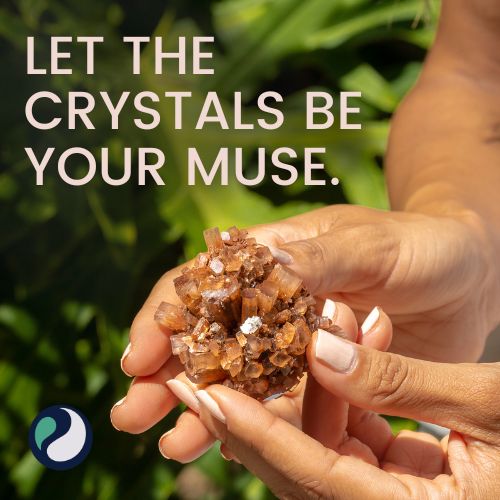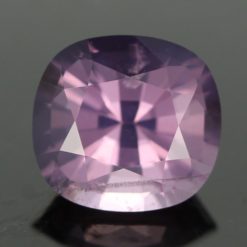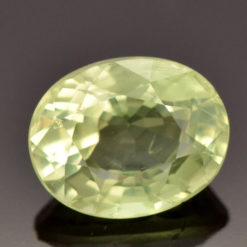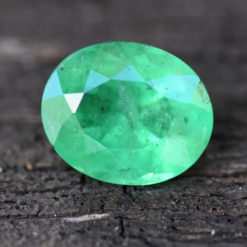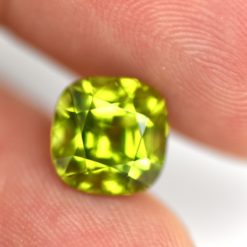No products in the cart.
Gemstone Information
Vivianite – Definition, Uses and Appearance
Vivianite, a captivating iron phosphate mineral, is celebrated for its alluring blue-green hue and significant role in the mineralogy world. This intriguing mineral, often discovered in geological formations rich in phosphate deposits, is not only a subject of study for scientists but also a cherished gemstone among collectors. Vivianite’s unique properties, including its transparency and the way it interacts with light, have fascinated experts and enthusiasts alike, making it a noteworthy topic in the realms of both geology and gemology.

The allure of Vivianite extends beyond its aesthetic appeal; its formation process and the environments in which it thrives are subjects of extensive scientific research. This mineral’s ability to form in various settings, from sedimentary layers to association with organic materials, demonstrates the dynamic processes of Earth’s geological activities. In this guide, we delve into the intricate world of Vivianite, exploring its definition, myriad uses, and the distinct appearance that sets it apart from other minerals.
What is Vivianite?
Vivianite is an iron phosphate mineral that possesses a distinctive crystal structure, contributing to its notable blue-green color and transparent to translucent appearance. This mineral is chemically composed of hydrated iron(II) phosphate, with the formula Fe^2+_3(PO_4)_2·8H_2O, indicating not only its iron and phosphate content but also its significant water of hydration. This composition plays a crucial role in Vivianite’s physical and optical properties, influencing its coloration, transparency, and the way it interacts with light.
The crystal structure of Vivianite is monoclinic, meaning its crystals form in a layered, plate-like arrangement that can be elongated and fibrous or tabular in shape. This structural characteristic is essential for understanding its formation and growth patterns, which are significantly influenced by the geological environments where Vivianite is found. Typically, it occurs in sedimentary rocks, particularly in environments rich in organic materials where phosphate minerals are likely to form.
Vivianite’s color is one of its most striking features, ranging from a pale, almost colorless green to deep blue or even blackish-blue hues. The color intensity of Vivianite often deepens with exposure to light and air, a process that involves the oxidation of its iron content. This fascinating color transition not only adds to the mineral’s aesthetic appeal but also provides insights into its chemical and physical changes over time.
In the realm of mineralogy, Vivianite is of considerable interest due to its unique properties and the clues it provides about the geochemical processes of the environments in which it forms. Its occurrence is often associated with the decay of organic materials, such as in bog iron ores and as a secondary mineral in phosphorite deposits, highlighting its role in the geological recycling of phosphate and iron.
Historical Background and Formation
Vivianite has a rich history that traces back to its initial discovery in Cornwall, England, where it was first identified and studied. Named after John Henry Vivian, a British mineralogist who made significant contributions to the study of this mineral, Vivianite has since been found in a variety of geographical locations worldwide, each offering unique insights into its formation and characteristics.
The formation of Vivianite is closely tied to geological processes that involve the interaction of iron and phosphate compounds in the presence of water. This mineral typically forms in sedimentary environments, especially those where organic material is abundant. The decay of organic matter releases phosphate ions, which then combine with iron to form Vivianite. As such, it is commonly found in bog iron ores, marshy areas, and alongside fossils in phosphate-rich sediments.

Geologically, Vivianite often appears in zones of oxidation-reduction, where it can crystallize in the reduced layers beneath the oxidized surface. Its formation is favored in anaerobic conditions, where low oxygen levels prevent the iron from becoming fully oxidized. This environment is conducive to the preservation of the Vivianite’s striking blue-green color, which can darken to almost black with prolonged exposure to air and light, reflecting the mineral’s sensitivity to environmental changes.
In addition to sedimentary deposits, Vivianite is also found in association with certain types of iron ore deposits and phosphorite formations, where it can occur as a secondary mineral. These geological settings provide the ideal conditions for Vivianite to crystallize, forming well-developed and often sizable specimens that are highly valued by collectors and researchers alike.
Physical and Optical Properties
Vivianite is distinguished by its unique physical and optical properties, which not only define its appearance but also contribute to its value and appeal, both scientifically and aesthetically. One of the most notable characteristics of Vivianite is its color, which ranges from a pale green to deep blue or even black. This color variation is primarily due to the mineral’s iron content and the degree of its exposure to oxidation, which can enhance the depth of color over time.
Physically, Vivianite is relatively soft, with a Mohs hardness rating of about 1.5 to 2, making it comparable to gypsum in terms of scratch resistance. This softness necessitates careful handling and storage, especially for gemstone use or scientific study. The mineral’s specific gravity ranges from 2.6 to 2.7, which is considered light, reflecting its composition that includes water molecules as part of its structure.
Optically, Vivianite is known for its striking transparency to translucency. This quality, combined with its color and crystal structure, makes it highly prized for microscopic and gemological studies. The mineral exhibits pleochroism, meaning it can show different colors or intensities of color when viewed from different angles, especially when in crystal form. This optical behavior is due to the varying absorption of light in different crystallographic directions of the mineral.
The crystal structure of Vivianite also contributes to its optical properties. With a monoclinic crystal system, it tends to form elongated, blade-like crystals that can appear fibrous or columnar. These formations often display a pearly to submetallic luster, enhancing the mineral’s visual appeal and making it a subject of interest for collectors and mineralogists.
Uses of Vivianite
Vivianite’s unique characteristics and properties extend its significance beyond just a mineralogical curiosity, making it valuable in various applications. Its uses span from scientific research to ornamental and industrial applications, demonstrating its versatility and importance.
In the realm of mineralogy and geology, Vivianite is a subject of extensive study. Researchers delve into its formation, properties, and occurrence to gain insights into geochemical processes and environmental conditions of its formation. Its presence and behavior can indicate the geochemical history of a region, helping scientists understand past environmental conditions, especially in sedimentary settings where organic matter and phosphate interactions occur.
As a gemstone, Vivianite is prized for its transparency and the striking blue-green colors it can exhibit. Although it’s relatively soft and sensitive to light and air, which can alter its color, Vivianite is sometimes cut and polished for use in jewelry. Its aesthetic appeal is appreciated by collectors and gem enthusiasts who value its unique hues and the way it interacts with light. However, due to its softness, it is more commonly displayed in protected environments to avoid deterioration.
In the art world, particularly in historical contexts, Vivianite has been used as a pigment. Its rich, deep blue color was valued for painting and decorative arts. Although this use is less common today due to the availability of synthetic pigments and the mineral’s sensitivity to light and air, historical artworks featuring Vivianite pigments are studied for their conservation and restoration, offering a glimpse into the artistic practices of the past.
Industrial applications of Vivianite include its role in the manufacture of certain types of glass and ceramics, where its iron and phosphate content can be beneficial. It is also studied in the context of environmental science, particularly in phosphorus cycling and water treatment processes, where its ability to interact with other elements can be utilized in the removal of contaminants.
Despite its relative rarity and the care required to preserve its natural beauty, Vivianite continues to fascinate and serve multiple roles, from a gemstone and scientific specimen to an industrial component, underscoring its multifaceted value and utility.
Collection and Display
The collection and display of Vivianite are practices that require a nuanced understanding of the mineral’s properties, as well as careful handling to preserve its natural beauty and integrity. Enthusiasts and professionals alike value Vivianite for its aesthetic appeal and the scientific information it encapsulates, making its presentation a matter of both art and science.
Collecting Vivianite often involves meticulous extraction and preparation processes, particularly because of its softness and sensitivity to environmental factors like light and oxygen. Collectors and geologists must ensure that the mineral is removed from its natural setting without damaging its delicate structure. Once collected, Vivianite specimens are typically cleaned very gently, often with minimal intervention to avoid altering their original state.

When it comes to displaying Vivianite, controlling environmental conditions is crucial to prevent degradation of the mineral’s appearance, particularly its color. Exposure to light and air can cause Vivianite to undergo oxidation, which gradually changes its color from vibrant blue-green to darker shades, and eventually to brown or black. To mitigate this, specimens are often displayed in controlled lighting conditions and may be kept in anoxic (oxygen-free) environments or sealed display cases to slow the oxidation process.
Museums and private collectors alike must consider these factors when exhibiting Vivianite. The displays are designed not only to showcase the mineral’s aesthetic beauty but also to educate viewers about its properties and significance. Informative labels and interactive exhibits can enhance the experience, providing insights into Vivianite’s geological origins, chemical composition, and the processes that influence its appearance and color change.
Conclusion
Vivianite, with its striking blue-green hues and intriguing chemical composition, is more than just a mineral; it is a testament to the complex and dynamic processes of our planet. From its formation in sedimentary environments rich in organic material to its role in mineralogy, gemology, and even historical art, Vivianite captures the essence of geological and biochemical interplay.
The journey through the definition, uses, and appearance of Vivianite reveals not only the scientific importance of this mineral but also its cultural and aesthetic value. As a subject of study, it offers insights into the geochemical cycles and environmental conditions that shape our natural world. In the realm of gemstones and collectibles, Vivianite’s beauty and rarity make it a prized possession, sought after by collectors and admired by enthusiasts.
Understanding Vivianite’s properties and preserving its integrity requires careful attention to detail, from collection to display, underscoring the importance of both scientific knowledge and conservation techniques. This ensures that Vivianite can continue to be appreciated not only for its present-day beauty but also for the historical and scientific stories it holds.
In closing, Vivianite is a fascinating mineral that serves as a bridge between the past and present, the geological and the artistic, the scientific and the aesthetic. Its study and appreciation reflect the human quest for knowledge and beauty, anchoring our curiosity in the tangible and the timeless elements of the natural world.


